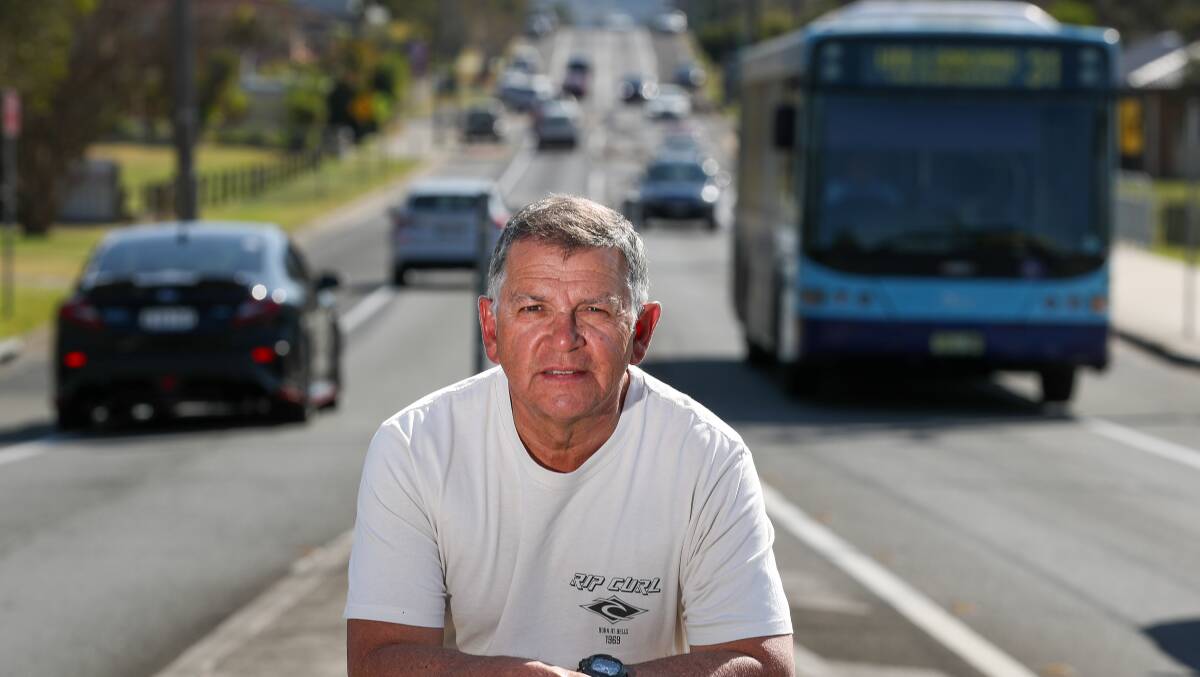Stephen Abela has lived in Horsley since 1987 but the past 10 years has left him living in an area he almost doesn't recognise.
Subscribe now for unlimited access.
$0/
(min cost $0)
or signup to continue reading
"In the last decade you could describe it as an explosion of development," he said.
"With housing, it's ramping up at a very high rate."
West Dapto is the fastest growing NSW suburb outside of Sydney; when complete it will include 19,000 homes for 50,000 people.
In 2021-22, the combined Horsley and Kembla Grange suburb grew by over 50 per cent.
While housing has grown rapidly, Mr Abela said that other social infrastructure hadn't kept pace.
"At [Dapto] High School, they're clearing land to put demountables in. High schools, primary schools, we're at full capacity."
As a solid Labor area for decades, Mr Abela said the new government had a chance to turn this around and ensure infrastructure matched population levels.

"As far as the Illawarra is concerned, I think it's very poor what's happening, we're left alone, unless we make some noise. Nothing happens, we're forgotten about."
Schools, hospitals and community centres were important, but what was the number one concern for West Dapto residents was the poor state of the region's roads.
Apart from the Fowlers Road upgrade, Mr Abela said the major arterial roads connecting the thousands of new homes with jobs, shops and the rest of the region were little more than farm tracks, more suited for a horse and cart than modern vehicles.
Routes in and out were often blocked by flood waters, including on Cleveland, Darkes, West Dapto and Bong Bong roads.
Plus, even when these roads were open, a lack of south-facing ramps to the M1 and the design of the Albion Park Rail bypass restricted access to the south, and the two lane section of the M1 heading to Wollongong regularly turned into a parking lot.
"Everyone's funnelling onto Marshall Mount Road, to get to Albion Park, rather than hopping on the M1 and driving south."
The NSW Budget has given some hope however, with $10 million allocated for planning work to begin on the ramps to the M1.
Mr Abela's grandchildren may go to school in a new public school in West Dapto or Calderwood, with funding for planning to begin for both of those schools. When kids will first walk through the gates, however, remains unknown.
The experience of Mr Abela and his neighbours of housing development streaking ahead of infrastructure may be starting to change.
The NSW budget puts $1.5 billion towards infrastructure such as roads, parks, hospitals, and schools in fast growing areas including the Illawarra and the $400 million Housing Infrastructure Fund promises to fund the sewers, lights and footpaths that knit together new communities such as those in West Dapto and Albion Park.
"The government is establishing the foundations of a new housing compact in NSW," Mr Mookhey said in his budget speech.
The revamped Housing and Productivity Contribution will levy fees on private developers to deliver community infrastructure in new release areas.
Planning minister and Wollongong MP Paul Scully said these changes would enable a shift in how development would occur in the region.
"It is critical that new communities where housing growth is occurring have access to high quality infrastructure and open space."
Ensuring these communities are not locked into poor quality builds, whether in high-rise tower or single storey homes, the budget allocates $24 million to establish a permanent NSW Building Commission, continuing the work of Building Commissioner David Chandler.
Property Council acting Illawarra director David White said the government's plans would improve the delivery of housing in the region.
"Funding for growth infrastructure extending to regional roads, parks and schools will help the West Lake Illawarra urban release area continue to emerge as a greenfield housing hotspot."
Our news app has had a makeover, making it faster and giving you access to even more great content. Download The Illawarra Mercury news app in the Apple Store and Google Play.


